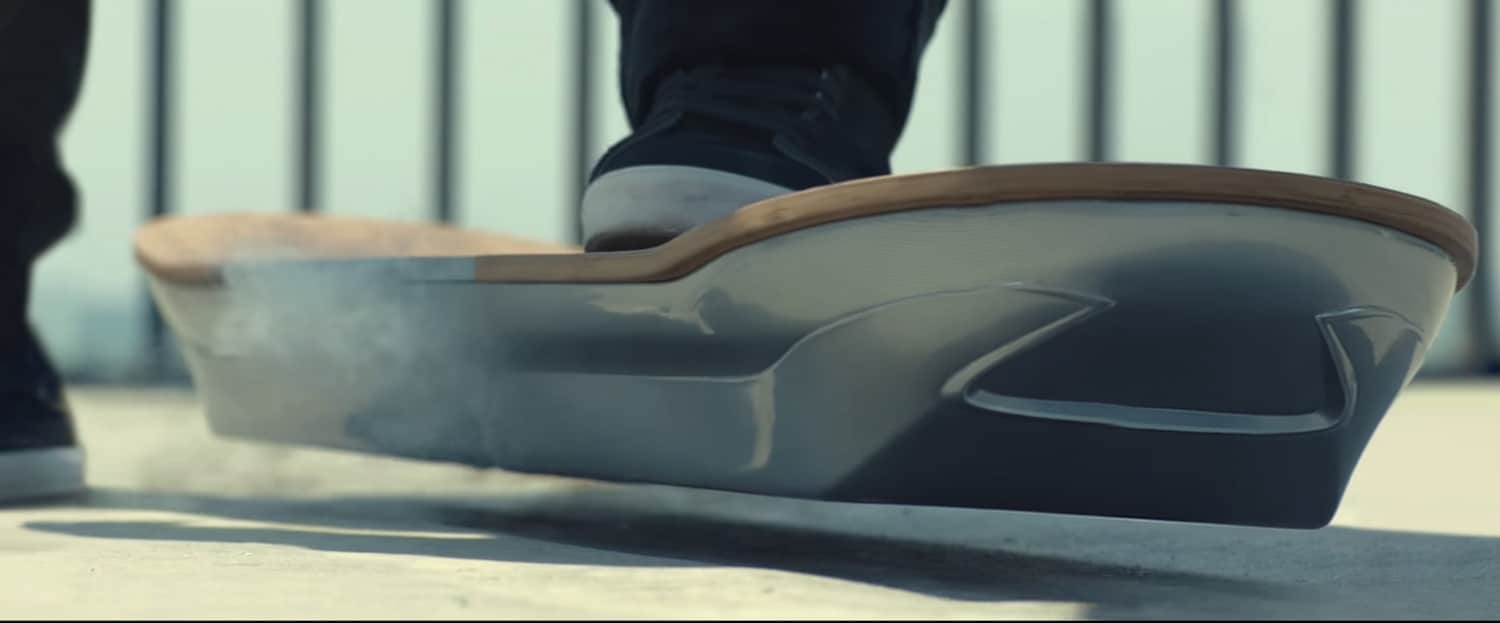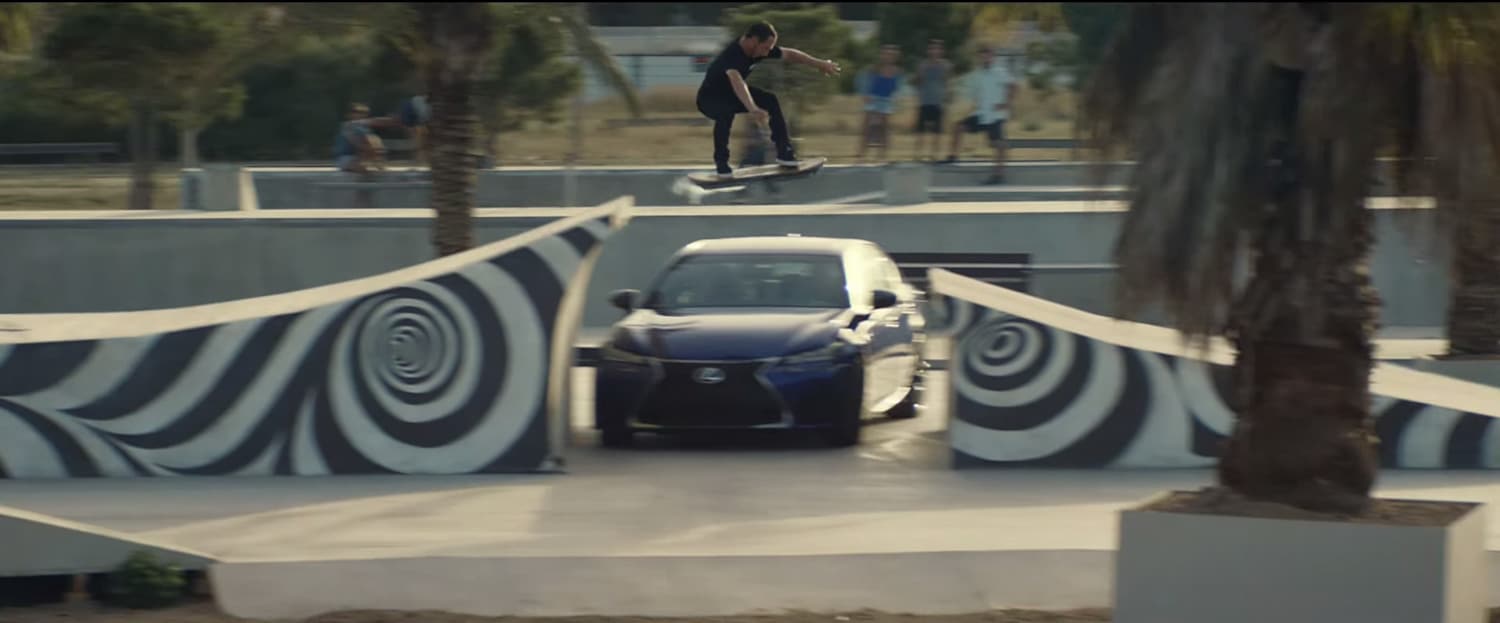
We’ve been drip-fed images, video, and shiny press releases about it for the last two months, but finally, video has emerged of the stunning Lexus Slide hoverboard in action. Check out the video below:
Before we go any further, let’s make it clear; this board isn’t going to revolutionize your daily life by next week, it’s not going to be the hot Christmas purchase for the brooding antisocial teenage boy of 2015, and it’s not going to be part of its own class at next year’s X Games … I think.
This is mostly because of how the hoverboard actually functions. While, yes, it does hover, it only does so in the video due to technology captive underneath the riding surface in the skatepark, which was built specifically to work with the Slide’s superconducting magnetic-levitation technology. Filmed in Cubelles, a town around an hour away from Barcelona, Spain, the entire skatepark is actually made from wood, painted grey to look like a traditional concrete skatepark. Under that thin wooden surface is a circuit of metal, which acts as the yin to the yang of the liquid nitrogen–cooled ceramic tiles within the board, creating lift. Take the board out of the skatepark where it’s filmed at, and it effectively becomes an awkwardly sized paperweight.

Furthermore, testimony from those who attended the board’s launch suggests that it’s very difficult to ride. Even professional skater Ross McGouran took a few tumbles in the first posted video, which probably makes this true. Those first to sample it have stated that the Slide is unbelievably difficult to ride, most complaints stemming from how unstable the board is laterally, with its sides often kissing the ground following even the slightest shift in weight, subsequently resulting in those aboard literally grinding to a halt. The amount of lift generated by the board is also impaired by the rider’s weight. So while Ross McGouran could ride the board with two inches of ground clearance, other beefier attendees could only muster half of that.

The Slide is also deeply impractical at this early stage. Discounting for a moment the fact that you have to, you know, build an entire skatepark for it before being able to use it, the Slide also needs a replenishment of liquid nitrogen — the substance that helps it achieve its superconductivity — every 20 minutes.
But, the Slide is still a fascinating piece of technology. Check out the video below for more information on how the hoverboard came to be.
The Slide can still claim to be the first functioning hoverboard, and, almost more importantly, it’s helped inject an incredible amount of interest and thought into a form of technology that may yet swoop out of the shadows to change the day-to-day lives. This may well be the first step, the creation that helps inspire engineers worldwide to harness the same technologies, or create new ones to bring something bigger, better, and more accessible to the market.
But we’ll still take five for the office, please.





